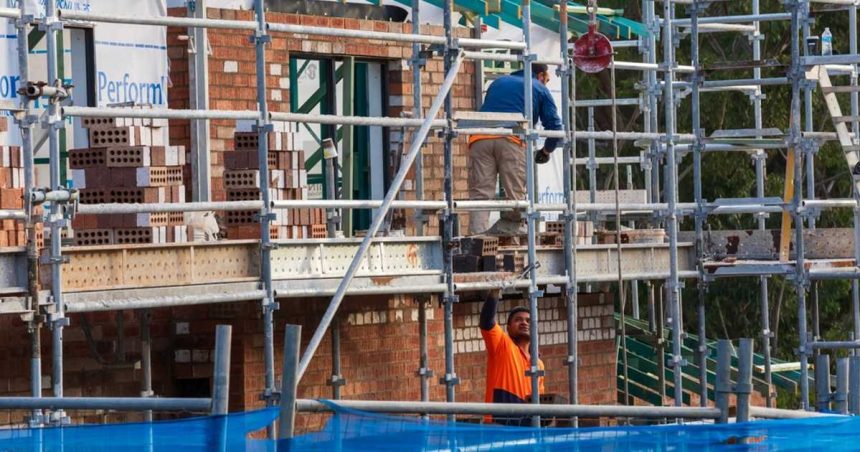Experts are warning that critical labour shortages and sky-high building costs have construction companies running the risk of being ‘zombified’.
New data from KPMG Australia revealed that the number of ASX-listed “zombies”, which are companies who continue trading despite showing signs of financial distress, has spiked by 31 per cent in just six months, climbing from 94 in May to 122 companies.
While this won’t come as a surprise to anyone following along with the constant barrage of construction company collapse hitting headlines, KPMG Head of Turnaround & Restructuring Services Gayle Dickerson said there are a number of factors hitting business hard across all industries heading into 2025.
“Stubborn inflation, sustained high interest rates and low consumer sentiment have left businesses with little breathing room to keep themselves solvent,” she said.
“These factors are simultaneously biting into profit margins and increasing debt burdens which is turning once stable businesses into zombies.”
“In prior years the increase in zombie companies was largely due to the removal of COVID stimulus which had propped up many businesses. Now, insolvency appointments are 50 per cent higher than pre-covid levels, which is a symptom of more challenging market conditions.”
But construction is still by far leading the pack in the way of financial distress, as companies continue to grapple with labour shortages and rising costs while attempting to meet current housing demand.
Only last month, Victorian contractor Geelong Building Solutions went a whopping $880,000 into the hole after getting all of his clients into their homes, due to the company not having any new builds on its books to cover loan repayments to creditors.
KPMG Australia Partner and Turnaround & Restructuring Services Property lead, Amanda Coneyworth, said that if subbies feeling the price pinch aren’t bailed out soon, it would be big businesses higher up the chain footing the bill.
“Despite the housing demand in Australia, cost increases and labour constraints are putting enormous strain on builders and developers,” she said.
“Risks in the subcontractor market are impacting the profitability of builders and developers up the chain which if not rectified will potentially see larger construction companies tip into zombie territory.”
Coneyworth also warned that further uncertainty for developers and asset owners could lead to commercial property builds being abandoned altogether, as perceived risk and debt begin to pile up.
“Retail vacancies have been increasing quarter to quarter consistent with the overall weakening of retail trade, so this is a subsector to keep an eye on for further zombification,” she added.
There is hope yet
The outlook might be bleak, but there are a few rays of hope that some survivors of this zombie apocalypse still have to cling to.
One is the federal government’s ‘safe harbour legislation’ which presents companies with a chance to recover from the brink of death.
This legislation, introduced in 2017, gives companies in financial distress “breathing space” to turn their business around without the risk of personal liability.
Companies operating in this safe harbour environment aren’t required to disclose that fact to clients or officials, allowing them to discreetly look through options that may lead to a better outcome than insolvency.
Mr Dickerson hoped “life raft” options like these would be enough to get business through the current turbulent economic waters as the RBA weighs up their options to curb the current inflation rate.
“The taming of inflation and the subsequent lowering of interest rates by the RBA, which we anticipate by February next year, will be the best cure of zombification,” he said.
“It does take time for the effects of interest rate drops to filter through the economy, but for businesses struggling there are still a raft of options available like Safe Harbour laws and private credit that simply didn’t exist in previous downturns.”
In the meantime, Coneyworth encouraged all developers and builders to “work closely” with their subcontractors, lenders and other stakeholders to “mitigate risks” associated with cost hikes and delays to construction.







